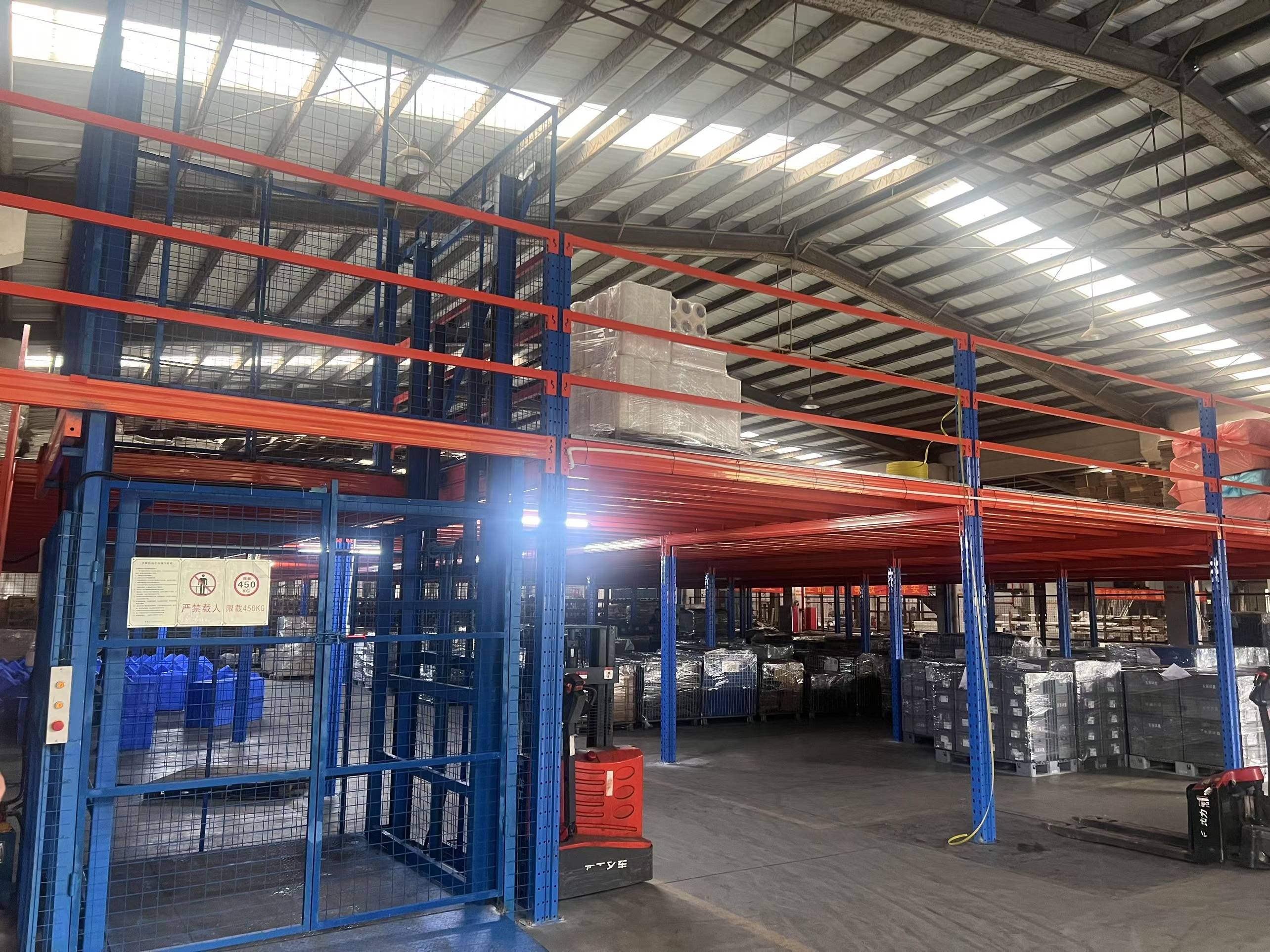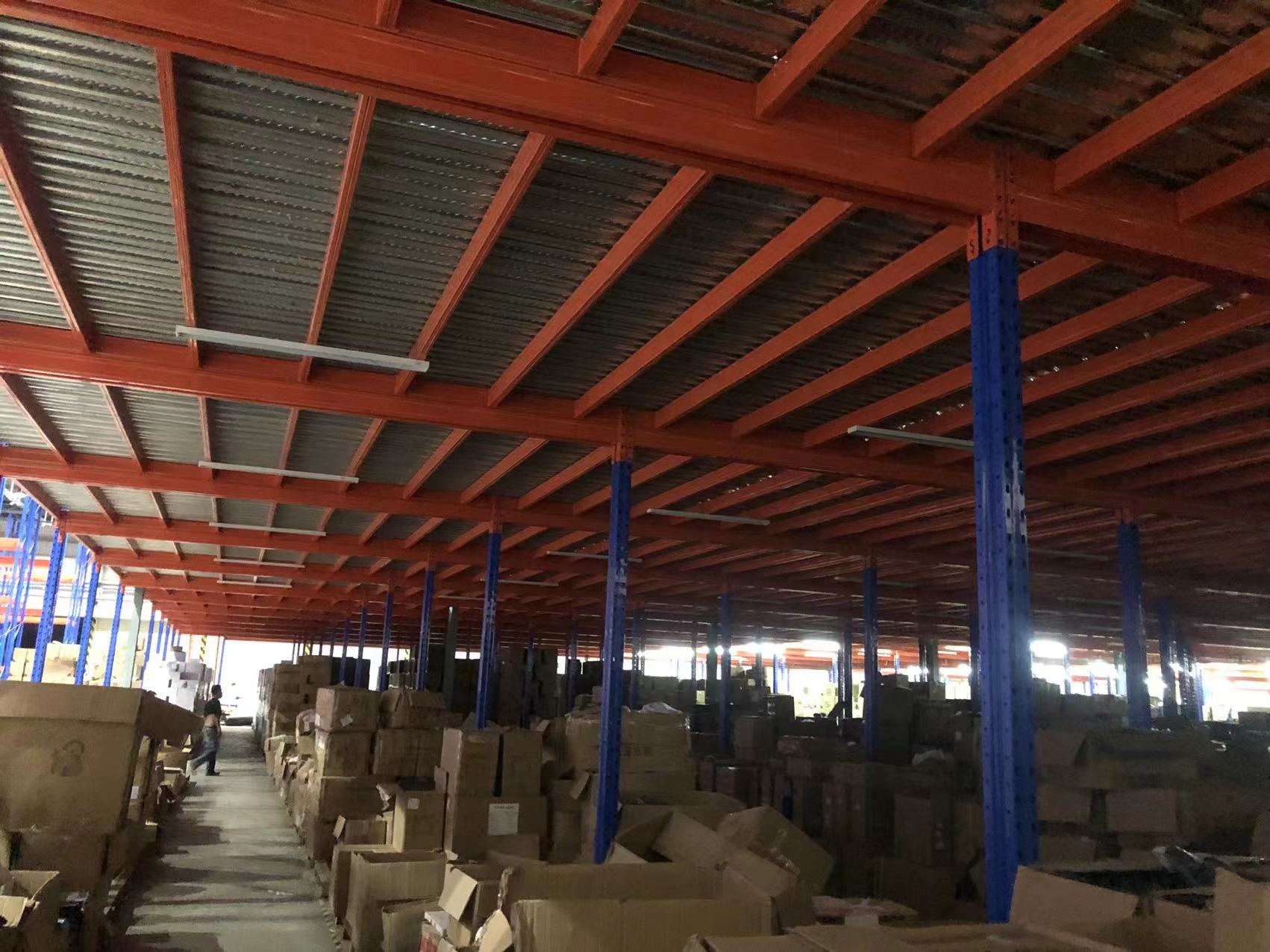In today's fast-paced industrial landscape, efficient storage management is crucial for optimizing productivity, reducing costs, and maintaining a competitive edge. Industrial warehouse shelving units play a pivotal role in this context, providing robust and versatile storage solutions that cater to diverse business needs. Whether you're managing a small distribution center or a large-scale manufacturing facility, understanding the intricacies of industrial warehouse shelving units can transform your storage capabilities. These systems are designed to handle heavy loads, maximize vertical space, and improve inventory accessibility, making them indispensable in modern logistics and supply chain operations. As industries evolve, the demand for reliable and scalable storage options has surged, highlighting the importance of selecting the right industrial warehouse shelving units for specific applications. This article delves into key aspects of these units, offering insights to help you make informed decisions without overwhelming technical jargon. By exploring their types, benefits, selection criteria, installation processes, and safety considerations, you'll gain a comprehensive understanding of how industrial warehouse shelving units can elevate your storage efficiency and operational workflow.

Industrial warehouse shelving units come in various designs, each tailored to meet specific storage requirements and environmental conditions. Understanding the different types is essential for choosing a system that aligns with your warehouse's layout and inventory needs. One common variant is the pallet racking system, which is ideal for storing large, heavy items loaded on pallets. These industrial warehouse shelving units typically feature upright frames and horizontal beams, allowing for easy access with forklifts and other material handling equipment. Another popular option is cantilever shelving, which is perfect for storing long, bulky items such as pipes, lumber, or furniture. This design uses arms extending from a central column, providing unobstructed storage without front columns that could impede accessibility.
For smaller items or parts, bin shelving systems are often employed. These industrial warehouse shelving units include shelves with dividers or bins to organize and segregate products, enhancing inventory management and reducing retrieval times. Additionally, mezzanine shelving units leverage vertical space by creating elevated platforms within the warehouse, effectively doubling storage capacity without expanding the footprint. This type is particularly useful in facilities with high ceilings but limited floor space. Lastly, mobile shelving units offer a dynamic solution by incorporating wheels or tracks, allowing the shelves to be compacted when not in use. This maximizes aisle space and improves density, making it a cost-effective choice for warehouses with fluctuating storage demands. By evaluating these types, businesses can identify the most suitable industrial warehouse shelving units to streamline their operations and adapt to changing inventory profiles.
Investing in high-quality industrial warehouse shelving units yields numerous advantages that extend beyond mere storage. One of the primary benefits is space optimization. By utilizing vertical space effectively, these units help warehouses store more items in a compact area, reducing the need for costly expansions or additional facilities. This is especially valuable in urban settings where real estate prices are high. Moreover, industrial warehouse shelving units enhance organizational efficiency by providing structured storage that categorizes inventory logically. This minimizes the time workers spend searching for items, leading to faster order fulfillment and improved productivity.
Durability is another significant advantage. Constructed from robust materials like steel, industrial warehouse shelving units are built to withstand heavy loads, harsh environments, and frequent use. This longevity translates to lower replacement costs and reduced downtime, contributing to long-term savings. Additionally, these units promote safety by reducing clutter and preventing accidents caused by improperly stored items. With features like reinforced beams and anti-slip surfaces, industrial warehouse shelving units help maintain a secure working environment. Finally, scalability is a key benefit, as many systems are modular and can be easily reconfigured or expanded as business needs evolve. This flexibility ensures that your storage infrastructure grows with your operations, making industrial warehouse shelving units a future-proof investment for any growing enterprise.
Choosing the right industrial warehouse shelving units requires careful consideration of several factors to ensure they meet your specific requirements. Start by assessing your inventory characteristics, such as weight, size, and fragility. Heavier items may require reinforced shelving with higher load capacities, while smaller goods might benefit from adjustable shelves for custom configurations. It's also important to evaluate the available space in your warehouse, including ceiling height and floor layout. This will help determine whether vertical units like mezzanine systems or compact mobile shelving are more suitable.
Another critical aspect is accessibility. If your operations involve frequent item retrieval, opt for industrial warehouse shelving units with open designs or easy-to-reach compartments. For example, selective pallet racking allows direct access to each pallet, whereas drive-in racking suits high-density storage with less frequent access. Budget constraints should also play a role in your decision. While initial costs are a factor, consider the total cost of ownership, including maintenance, installation, and potential expansions. Investing in durable industrial warehouse shelving units may have a higher upfront cost but can lead to savings over time through reduced repairs and replacements. Lastly, consult with professionals or use planning tools to visualize how different units will integrate into your workflow. By taking a holistic approach, you can select industrial warehouse shelving units that optimize efficiency, safety, and cost-effectiveness.

Proper installation and regular maintenance are vital for maximizing the performance and lifespan of industrial warehouse shelving units. During installation, it's crucial to follow manufacturer guidelines and involve trained personnel to ensure structural integrity. Begin by preparing the site, including leveling the floor and clearing obstacles. Assemble the units step-by-step, checking that all components like beams, frames, and connectors are securely fastened. For larger systems, such as pallet racking, use anchoring devices to stabilize the structure and prevent tipping. Safety measures, like wearing protective gear and conducting load tests, should never be overlooked.
Once installed, routine maintenance is key to preventing issues and extending the life of your industrial warehouse shelving units. Schedule regular inspections to identify signs of wear, such as rust, bent beams, or loose bolts. Clean the shelves periodically to remove dust and debris that could compromise stability or contaminate stored items. In environments with high humidity or temperature fluctuations, consider applying protective coatings to prevent corrosion. Additionally, train staff on proper usage, including weight limits and safe loading practices, to avoid overloading or misuse. By implementing a proactive maintenance plan, you can ensure that your industrial warehouse shelving units remain reliable and safe, minimizing the risk of accidents and costly downtime.
Adhering to safety standards is non-negotiable when using industrial warehouse shelving units, as failures can lead to severe injuries, product damage, and legal liabilities. Start by complying with industry regulations, such as those set by OSHA (Occupational Safety and Health Administration) or similar bodies, which outline requirements for load capacity, spacing, and structural integrity. For instance, industrial warehouse shelving units should be designed to handle specified weight limits without buckling, and aisles must be wide enough for safe movement of equipment and personnel.
Regular risk assessments are essential to identify potential hazards, such as uneven loading or obstructed pathways. Implement safety protocols, including clear labeling of weight capacities and restricted zones, to guide workers. It's also important to use accessories like guardrails or netting to prevent items from falling. Training employees on proper handling techniques and emergency procedures further enhances safety. For example, teach them how to evenly distribute loads and report any defects immediately. By prioritizing safety in the design, installation, and operation of industrial warehouse shelving units, businesses can create a secure environment that protects both assets and people, ultimately fostering a culture of responsibility and efficiency.
Industrial warehouse shelving units are more than just storage fixtures; they are integral components of a well-organized and efficient warehouse. By understanding their types, benefits, selection criteria, installation processes, and safety measures, businesses can harness their full potential to improve operations. Whether you're aiming to save space, boost productivity, or enhance safety, the right industrial warehouse shelving units can make a significant difference. As you plan your storage strategy, remember to consider your unique needs and seek expert advice if necessary. With careful implementation, these units will serve as a reliable backbone for your logistics, supporting growth and innovation for years to come.
Q1: What factors should I consider when determining the load capacity for industrial warehouse shelving units?
A1: When determining load capacity, consider the weight and distribution of your inventory, the material and design of the shelving units, and any dynamic loads from equipment or personnel. Always refer to manufacturer specifications and conduct load tests to ensure safety and compliance with industry standards.
Q2: How can I maximize space efficiency with industrial warehouse shelving units in a small warehouse?
A2: To maximize space in a small warehouse, opt for vertical solutions like mezzanine shelving or high-rise units that utilize ceiling height. Mobile shelving systems can also compress aisles when not in use, and adjustable shelves allow for custom configurations to fit various item sizes without wasting space.
Q3: Are there environmentally friendly options for industrial warehouse shelving units?
A3: Yes, many industrial warehouse shelving units are made from recyclable materials like steel, and some manufacturers offer eco-friendly designs that reduce waste and energy consumption during production. Additionally, choosing durable units that require less frequent replacement can minimize environmental impact over time.
Q4: What common mistakes should I avoid when installing industrial warehouse shelving units?
A4: Common mistakes include neglecting to level the floor, overloading shelves beyond their capacity, improper assembly of components, and failing to anchor units securely. Always follow installation guidelines, use professional help if needed, and conduct post-installation inspections to prevent accidents.
Q5: How often should I inspect and maintain my industrial warehouse shelving units?
A5: It's recommended to inspect industrial warehouse shelving units at least quarterly, or more frequently in high-use environments. Regular maintenance should include checking for damage, tightening bolts, cleaning surfaces, and updating safety labels. Immediate inspections should follow any incidents or changes in storage patterns.
 Wechat
Wechat
 Whatsapp
Whatsapp